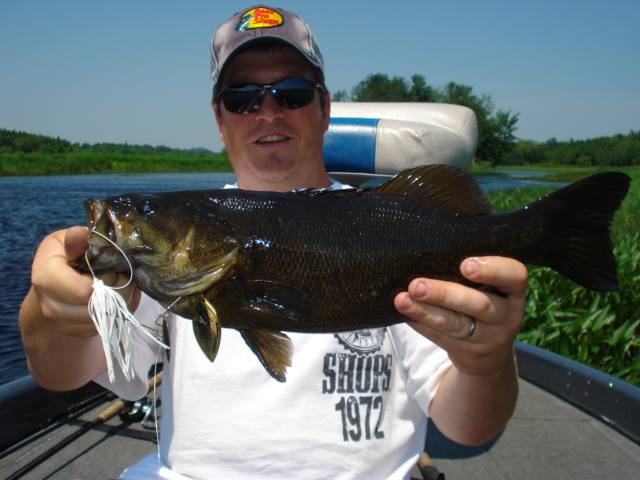
In some fisheries, catch and release is vitally important. In others, the taking of a controlled amount of bass can actually help improve the health of the remaining bass by decreasing the competition for forage. Although I have never kept a smallmouth bass, we are not completely opposed to keeping of a small number of smallmouth bass under the right circumstances.
Living Beyond The Livewell
We know from studies of bass tournament fishing that survival rates of bass held in a live well are very good when the water temperature is below 62 but becomes increasingly poor as the temperature reaches above 80F. In a study in Wisconsin, the delayed mortality rate for smallmouth bass was in the 40% range. The mortality rate when the temprture was 58 to 65 F, overall mortality was less than 1%. This shows that bass are stressed by the higher water temps and should not be put into live wells during this time of the year.
Stress and spawning
Additional research has been done to look at the effects of the duration of retrieval on smallmouth bass during nest guarding which gives us insight on improving the survival of the bass we release.
Researchers studied the stress-effects of catch and release angling on nesting smallies. Nest guarding smallies caught by hook and line were played either for less than 20 seconds or to near complete exhaustion. For smallies played to exhaustion, about 50% of their energy reserves were depleted, which caused high stress. Smallies quickly landed had five times less sore muscle chemical present and had measurably faster recovery times.
Removing males from nests disrupted parental activities and resulted in lack of protection, which left young fish or eggs vulnerable to nest-robbing predators. It took exhausted fish an average of 8 minutes to return to nest guarding…more than ample time for nest robbers to eat eggs or fry. I suggest you resist the temptation to catch smallies during spawning season. Source
The take home message here is that smallmouth bass should be played quickly and released quickly. Working them to exhaustion can be detrimental and avoid catching nesting smallies as the males guarding the nests will lose their ability to keep predators from their nests.
Bass handling
Another area we can make a big difference in smallmouth bass survival is in our handling of our catch.
Use a net: Using a net to bring the bass into the boat is ideal. Hanging any bass over 2 pounds or 15 inches is probably not a good idea. Use a net if you have one. It decreases damage to the fish and reduces your chances of getting impaled by a hook. in addition, fish have a slime layer that helps protect against disease. The less handling of the body, the better.

Smallmouth bass catch and release tips
- Get the bass to the boat quickly, especially when the water is warm.
- Use a net.
- Minimize handling to preserve the slime layer.
- Support the weight with two hands when possible.
- Never try to hold a bass horizontal by its mouth only.
- Take a quick picture and get them back in the water ASAP. Remember, a fish out of water is like you under the water.
Remember, just because the bass swims away, doesn’t mean it survived being caught. The way that our bronzeback friends have been handled will determine if they survive long term.


